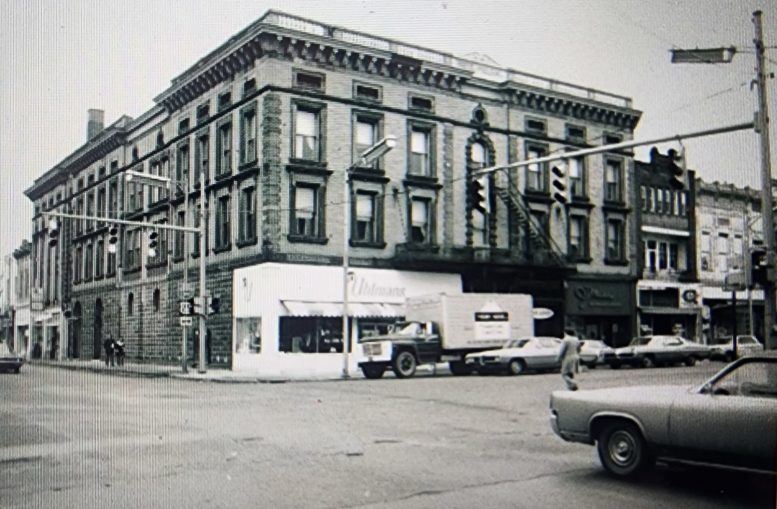In the Spring of 1895, W. H. Millikin announced a plan to build a new block in downtown Bowling Green, on the corner of Main and Wooster streets. Millikin made his fortune in local oil fields and wanted to give back to the city.
The three-story hotel and business block were designed by the Toledo based architectural firm, Bacon and Huber. After two years of construction issues, including reportedly having to purchase six inches of a neighboring block for $250 (the equivalent of several thousand dollars today) because the building was just a little too large for the site, the Millikin Hotel opened to the public in January of 1897.
The block included storefronts with a clothing store, a jeweler, and a barber shop.
The Millikin Hotel was a popular hotel during Bowling Green’s oil boom, boasting steam heat, indoor plumbing, elevators, a ballroom and a dining room.
It was the first building in Bowling Green to have electricity and supplied power to several stores on Main Street. A single room was $2.50, about $90 today, and a double was $3.50, about $125. Visitors could have a seven-course meal in the dining room for 50 cents, or 25 cents for Bowling Green residents.
Famous visitors included Clark Gable and Ernest Hemmingway, who came to the area for pheasant hunting, Harry “The Human Fly” Gardiner, the Trapp Family Singers, and Henry J. Heinz.
Pretty Boy Floyd and Billy “The Baby-Faced Killer” Miller visited the Uhlman’s Department Store in the building in 1935, leading to a shootout on the street in front of the hotel, in which Billy was killed.
The rise in the popularity of cars led to the eventual decline of the hotel, a lack of parking in the area and the increasing noise downtown made the hotel a less desirable destination, and it closed in the 1950s.
The hotel sat vacant for a number of years, with various businesses filling the storefronts on the first floor. It was placed on the National Register of Historic Places in 1977 and in 1993 the building was donated to Bowling Green State University by the remaining members of Millikin’s family.
The university, citing an inability to keep up with maintenance, sold the building to local developer, Robert Maurer, in 1999. After his investment in renovations (including modern heat and air conditioning), the building was changed into apartments, while the bottom floor remains for commercial uses.
To this day, the 126-year-old building still has the beautiful character of when it was built and serves as an important anchor for the city’s authentic, historic downtown.
Would you like to nominate a historic building or site for recognition? You can do this through the City website at – https://www.bgohio.org/FormCenter/Planning-13/Historic-BuildingSite-Nomination-Form-83
You can learn more about the Historic Preservation Commission by attending their meetings (the fourthTuesday of each month at 4 p.m.) or by visiting the webpage at: https://www.bgohio.org/436/Historic-Preservation-Commissionhttps://www.bgohio.org/436/Historic-Preservation-Commission
(Special thanks to Sara Butler-Tongate, Friend of the HPC, for writing this article)

